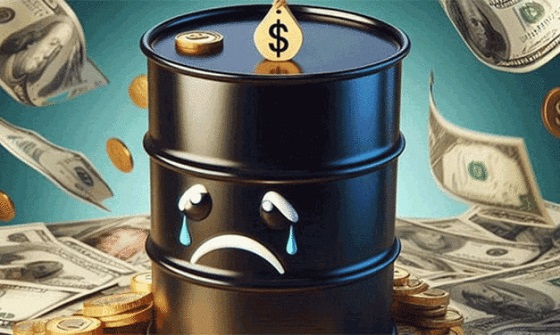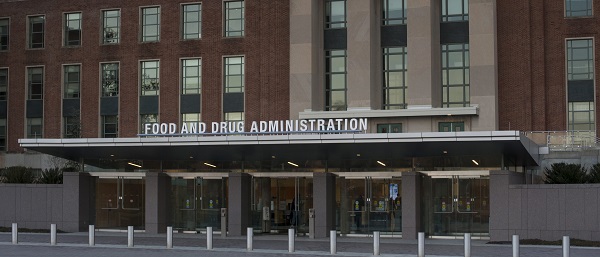Uncategorized
Government unlikely to get fully back to business for days

WASHINGTON — The federal government is expected to remain partially closed past Christmas Day in a protracted standoff over President Donald Trump’s demand for money to build a border wall with Mexico.
With Trump’s insistence on $5 billion for the wall and negotiations with Democrats in Congress far from a breakthrough, even a temporary measure to keep the government running while talks continued seems out of reach until the Senate returns for a full session Thursday.
From coast to coast, the first day of the shutdown played out in uneven ways. The Statue of Liberty was still open for tours, thanks to money from New York state, and the U.S. Post Office was still delivering mail, as an independent agency.
Yet the disruption has affected many government operations and the routines of 800,000 federal employees. Roughly 420,000 workers were deemed essential and were expected to work unpaid. An additional 380,000 were to be furloughed, meaning they will stay home without pay. The Senate had already passed legislation ensuring that workers will receive back pay, and the House was likely to follow suit.
No one knew how long the closures would last. Unlike other shutdowns, this one seemed to lack urgency, coming during the long holiday weekend after Trump had already declared Monday, Christmas Eve, a federal holiday. Rather than work around the clock to try to end the shutdown, as they had done in the past, the leaders of the House and the Senate effectively closed up shop. But they didn’t rule out action if a deal were struck.
“Listen, anything can happen,” Senate Majority Leader Mitch McConnell told reporters after he closed the Senate’s rare Saturday session hours after it opened.
But after ushering
At the White House, Trump hosted a lunch Saturday with conservative lawmakers, including House Freedom Caucus chiefs Mark Meadows of North Carolina and Jim Jordan of Ohio, and several senators. Absent from the guest list were GOP leaders or any Democrats, who would be needed for a deal.
“I am in the White House, working hard,” tweeted the president, who
Trump’s re-election campaign sent out a fundraising email late Saturday launching what he called “the most important membership program ever – the OFFICIAL BUILD THE WALL MEMBERSHIP.” The president urged donors to sign up.
With Democrats set to take control of the House on Jan. 3, and Speaker Paul Ryan on his way out, the shutdown was providing a last gasp of the conservative majority before the new Congress.
Trump savored the prospect of a shutdown over the wall for months. Last week he said he would be “proud” to close down the government. He had campaigned on the promise of building the wall, and he also promised Mexico would pay for it. Mexico has refused to do so.
In recent days, though, Trump tried to shift blame to Democrats for not acceding to his demand. He has given mixed messages on whether he would sign any bill into law.
After the luncheon at the White House, Sen. Lindsey Graham, R-S.C., said, “It’s clear to me he believes the additional funding is necessary.”
Senate Democratic leader Chuck Schumer of New York met with Pence on Saturday at the request of the White House, according to Schumer’s office. But the senator’s spokesman said they remained “very far apart” on a spending agreement.
Schumer said the “Trump shutdown” could end immediately if the president simply dropped his demand for money. “If you want to open the government, you must abandon the wall,” Schumer said.
Democrats said they were open to other proposals that didn’t include the wall, which Schumer said was too costly and ineffective. They have offered to keep spending at existing levels of $1.3 billion for border fencing and other security.
But Trump, digging in, tweeted about “the crisis of illegal activity” at American’s southern border is “real and will not stop until we build a great Steel Barrier or Wall.”
Republican leaders largely stayed in the background of the negotiations. McConnell acknowledged that any deal to reopen government would require Democratic support for passage and the president’s signature.
Senators approved a bipartisan deal earlier in the week to keep the government open into February and provide $1.3 billion for border security projects, but not the wall. But as Trump faced criticism from conservatives for “caving” on a campaign promise, he pushed to House to approve a package temporarily financing the government but also setting aside $5.7 billion for the border wall.
A test vote in the Senate on Friday showed that Republicans lacked the 60 votes needed to advance the House plan.
Pelosi, poised to become speaker, said in a letter to colleagues Saturday that “until President Trump can publicly commit to a bipartisan resolution, there will be no agreement before January when the new House Democratic Majority will swiftly pass legislation to re-open government.”
The impasse blocked money for nine of 15 Cabinet-level departments and dozens of agencies, including the departments of Homeland Security, Transportation, Interior, Agriculture, State and Justice.
Those being furloughed included nearly everyone at NASA and 52,000 workers at the Internal Revenue Service. About 8 in 10 employees of the National Park Service were to stay home; many parks were expected to close.
Some agencies, including the Pentagon and the departments of Veterans Affairs and Health and Human Services, were already funded and will operate as usual. Also still functioning were the FBI, the Border Patrol and the Coast Guard. Transportation Security Administration officers continued to staff airport checkpoints and air traffic controllers were on the job.
Many of Congress’ most conservative Republicans welcomed such a confrontation, but most GOP lawmakers wanted to avoid one because polling found the public opposed the wall and a shutdown over it.
Sen. Lamar Alexander of Tennessee said, “This is a complete failure of negotiations and a success for no one.”
___
Associated Press writers Alan Fram, Mary Clare Jalonick and Jill Colvin in Washington contributed to this report.
Lisa Mascaro, Darlene Superville And Kevin Freking, The Associated Press
Uncategorized
Cost of bureaucracy balloons 80 per cent in 10 years: Public Accounts

The cost of the bureaucracy increased by $6 billion last year, according to newly released numbers in Public Accounts disclosures. The Canadian Taxpayers Federation is calling on Prime Minister Mark Carney to immediately shrink the bureaucracy.
“The Public Accounts show the cost of the federal bureaucracy is out of control,” said Franco Terrazzano, CTF Federal Director. “Tinkering around the edges won’t cut it, Carney needs to take urgent action to shrink the bloated federal bureaucracy.”
The federal bureaucracy cost taxpayers $71.4 billion in 2024-25, according to the Public Accounts. The cost of the federal bureaucracy increased by $6 billion, or more than nine per cent, over the last year.
The federal bureaucracy cost taxpayers $39.6 billion in 2015-16, according to the Public Accounts. That means the cost of the federal bureaucracy increased 80 per cent over the last 10 years. The government added 99,000 extra bureaucrats between 2015-16 and 2024-25.
Half of Canadians say federal services have gotten worse since 2016, despite the massive increase in the federal bureaucracy, according to a Leger poll.
Not only has the size of the bureaucracy increased, the cost of consultants, contractors and outsourcing has increased as well. The government spent $23.1 billion on “professional and special services” last year, according to the Public Accounts. That’s an 11 per cent increase over the previous year. The government’s spending on professional and special services more than doubled since 2015-16.
“Taxpayers should not be paying way more for in-house government bureaucrats and way more for outside help,” Terrazzano said. “Mere promises to find minor savings in the federal bureaucracy won’t fix Canada’s finances.
“Taxpayers need Carney to take urgent action and significantly cut the number of bureaucrats now.”
Table: Cost of bureaucracy and professional and special services, Public Accounts
| Year | Bureaucracy | Professional and special services |
|
$71,369,677,000 |
$23,145,218,000 |
|
|
$65,326,643,000 |
$20,771,477,000 |
|
|
$56,467,851,000 |
$18,591,373,000 |
|
|
$60,676,243,000 |
$17,511,078,000 |
|
|
$52,984,272,000 |
$14,720,455,000 |
|
|
$46,349,166,000 |
$13,334,341,000 |
|
|
$46,131,628,000 |
$12,940,395,000 |
|
|
$45,262,821,000 |
$12,950,619,000 |
|
|
$38,909,594,000 |
$11,910,257,000 |
|
|
$39,616,656,000 |
$11,082,974,000 |
Uncategorized
Trump Admin Establishing Council To Make Buildings Beautiful Again


From the Daily Caller News Foundation
By Jason Hopkins
The Trump administration is creating a first-of-its-kind task force aimed at ushering in a new “Golden Age” of beautiful infrastructure across the U.S.
The Department of Transportation (DOT) will announce the establishment of the Beautifying Transportation Infrastructure Council (BTIC) on Thursday, the Daily Caller News Foundation exclusively learned. The BTIC seeks to advise Transportation Secretary Sean Duffy on design and policy ideas for key infrastructure projects, including highways, bridges and transit hubs.
“What happened to our country’s proud tradition of building great, big, beautiful things?” Duffy said in a statement shared with the DCNF. “It’s time the design for America’s latest infrastructure projects reflects our nation’s strength, pride, and promise.”
“We’re engaging the best and brightest minds in architectural design and engineering to make beautiful structures that move you and bring about a new Golden Age of Transportation,” Duffy continued.
Mini scoop – here is the DOT’s rollout of its Beautifying Transportation Infrastructure Council, which will be tasked with making our buildings beautiful again. pic.twitter.com/
9iV2xSxdJM — Jason Hopkins (@jasonhopkinsdc) October 23, 2025
The DOT is encouraging nominations of the country’s best architects, urban planners, artists and others to serve on the council, according to the department. While ensuring that efficiency and safety remain a top priority, the BTIC will provide guidance on projects that “enhance” public areas and develop aesthetic performance metrics.
The new council aligns with an executive order signed by President Donald Trump in August 2025 regarding infrastructure. The “Making Federal Architecture Beautiful Again” order calls for federal public buildings in the country to “respect regional architectural heritage” and aims to prevent federal construction projects from using modernist and brutalist architecture styles, instead returning to a classical style.
“The Founders, in line with great societies before them, attached great importance to Federal civic architecture,” Trump’s order stated. “They wanted America’s public buildings to inspire the American people and encourage civic virtue.”
“President George Washington and Secretary of State Thomas Jefferson consciously modeled the most important buildings in Washington, D.C., on the classical architecture of ancient Athens and Rome,” the order continued. “Because of their proven ability to meet these requirements, classical and traditional architecture are preferred modes of architectural design.”
The DOT invested millions in major infrastructure projects since Trump’s return to the White House. Duffy announced in August a $43 million transformation initiative of the New York Penn Station in New York City and in September unveiledmajor progress in the rehabilitation and modernization of Washington Union Station in Washington, D.C.
The BTIC will comprise up to 11 members who will serve two-year terms, with the chance to be reappointed, according to the DOT. The task force will meet biannually. The deadline for nominations will end Nov. 21.
-

 Crime2 days ago
Crime2 days agoBrown University shooter dead of apparent self-inflicted gunshot wound
-

 Health1 day ago
Health1 day agoRFK Jr reversing Biden-era policies on gender transition care for minors
-

 Business21 hours ago
Business21 hours agoGeopolitics no longer drives oil prices the way it used to
-

 Business21 hours ago
Business21 hours agoArgentina’s Milei delivers results free-market critics said wouldn’t work
-

 Alberta1 day ago
Alberta1 day agoAlberta’s new diagnostic policy appears to meet standard for Canada Health Act compliance
-

 Business2 days ago
Business2 days agoTrump signs order reclassifying marijuana as Schedule III drug
-

 Censorship Industrial Complex1 day ago
Censorship Industrial Complex1 day agoCanadian university censors free speech advocate who spoke out against Indigenous ‘mass grave’ hoax
-

 Daily Caller1 day ago
Daily Caller1 day agoEx-FDA Commissioners Against Higher Vaccine Standards Took $6 Million From COVID Vaccine Makers










